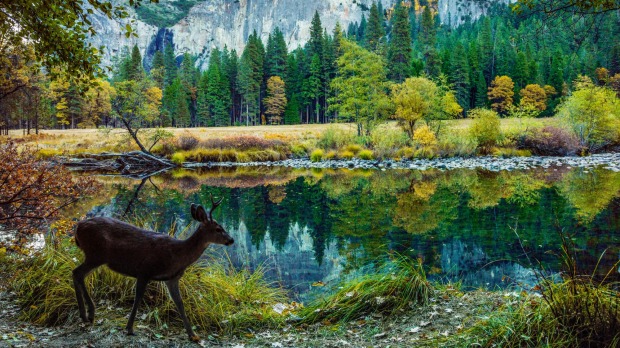
For more than half a century, Khaled al-Assad, 82-year-old scholar and archaeologist, worked as custodian of antiquities at the ancient Syrian wonder that is Palmyra – the 2000-year-old, Roman-era city that earned UNESCO World Heritage listing in 2009.
But, shockingly, in August Assad's mutilated and headless body was hung on a column in the main square of his beloved archaeological site. The terrorists of Islamic State who murdered him had interrogated him for more than a month, trying to discover where Palmyra's treasures had been transferred for safe-keeping.
Since Assad's assassination, Islamic State has taken bizarre delight in slowly destroying this historic and miraculously preserved cultural site, including, most recently, blowing up the site's Arch of Triumph, described as a jewel among the Palmyra ruins.
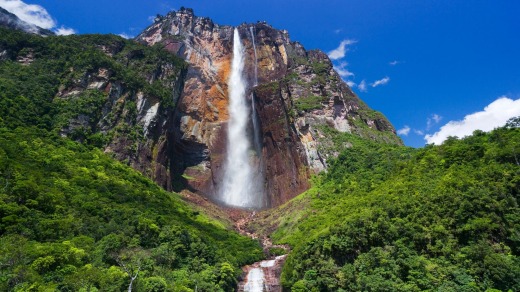
Islamic State appears determined to gain maximum publicity for its wanton destruction, with a series of controlled explosions, each one filmed to show how little it cares for human achievements which don't match its own narrow definition of culture.
These events have prompted some experts to ask whether Palmyra would have suffered this fate if it wasn't World Heritage-listed? Did its United Nations credentials guarantee its demolition? In short, is a World Heritage listing a blessing or a curse?
It is a debate which has gone on since long before the emergence of Islamic State. Just ask the citizens of Edinburgh. Or Bath. Or Dresden. Or Oman. Or York. Or Liverpool. Three of those six tourist destinations are UNESCO-listed. The other three either used to be, or regretted it, or weren't interested in being nominated.
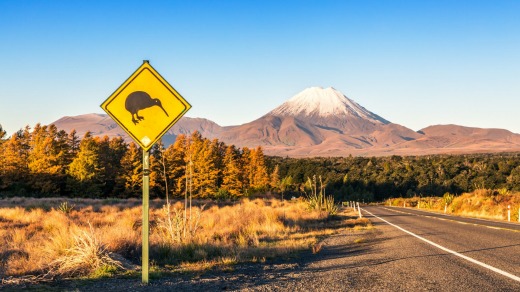
Earlier this year, UNESCO, which celebrated its 40th anniversary in 2012, gave a reprieve to Australia when it announced that the Great Barrier Reef would not be listed as endangered, but warned that more must be done to protect the national wonder. The government considered the issue important enough to spend $400,000 lobbying against a potentially devastating "endangered" listing, proving perhaps that World Heritage-listing, or at least its removal, really does matter.
There are now 1031 UNESCO World Heritage sites around the globe, most of them (802) "Cultural", which usually means buildings or archaeological sites. Another 197 are "Natural", such as national parks and wilderness – including most of of Australia's 19 sites.
In the more than four decades of UNESCO's existence, just two World Heritage sites have ever been "delisted". Oman's only entry, the Arabian Oryx Sanctuary, was unceremoniously dumped in 2007 after the oryx was hunted to extinction.
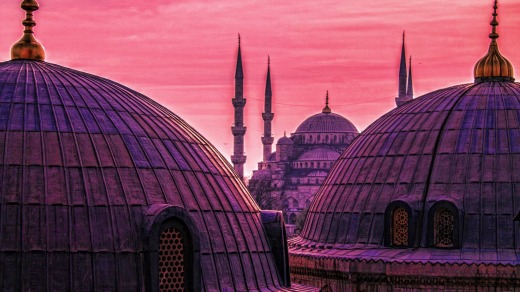
The residents of Dresden's Elbe Valley, on the other hand, not only rebuilt their city after one of the most notorious bombing campaigns of World War II, but also decided a new bridge linking the communities either side of the river was more important to them than retaining World Heritage status.
So, have visitor numbers to Dresden dropped since it delisted itself in 2009? Not significantly.
Elsewhere, Edinburgh's World Heritage status has caused considerable controversy. Some residents of the Scottish capital argue the listing is a planning straitjacket, restricting the city's ability to reinvent itself – architecturally and dynamically. Would Edinburgh's neoclassical New Town ever have been built if an equivalent of the UNESCO list existed in the 18th century?
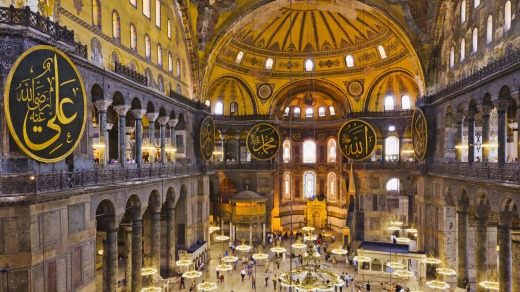
Both Bath and Durham also feature on the United Kingdom's UNESCO list – but not Oxford or York, two cities which have similar cultural appeal, and with no shortage of visitors. Has the World Heritage status benefited Bath and Durham at the expense of Oxford and York? Not according to the statistics. Visitor numbers have risen almost identically for all four cities.
World Heritage supporters say that Britain (like France, Italy and Spain) is a special case because the country was already world-famous for its heritage attractions long before 1972 when UNESCO resolved to begin protecting sites of cultural and natural heritage.
Indeed, with "only" 24 World Heritage sites, Britain is arguably under-represented compared to Italy (51 sites), China (48), Spain (44), France (41), Germany (40), Mexico (33) and India (32). And when you look at the British list, there are some strange inclusions and omissions.
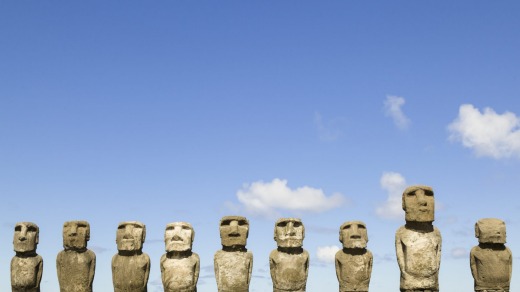
Sure, Stonehenge, Giant's Causeway, Blenheim Palace, the Tower of London and Maritime Greenwich are all there. But who would have guessed Pontcysyllte aqueduct and canal would be on the British list? Or Bermuda's historic town of St Georges?
Traveller, in light of the events surrounding Syria's Palmyra, and for that matter Australia's Great Barrier Reef reprieve, asked four heritage and tourism experts for their opinions on the virtues, or otherwise, of a World Heritage listing.
Is it always a positive? Does it encourage us to visit places that we would never normally consider or even value? And does it lead to richer, more fulfilled travel experiences?
PROFESSOR RALF BUCKLEY, INTERNATIONAL CHAIR IN ECOTOURISM RESEARCH, GRIFFITH UNIVERSITY, QUEENSLAND.
In 2004, biologist Buckley published the only academic study into how World Heritage status influences visitor numbers in national parks. The vast majority of Australia's World Heritage sites are a mixture of landscapes and sites of Indigenous significance (often both: Uluru, Kakadu, the Bungle-Bungles).
Relatively few "modern" buildings are ever included on the UNESCO list, he explains. Yet Australia has two of them. The Sydney Opera House was added in 2007, followed three years later by Melbourne's Royal Exhibition Building. Other buildings in Australia are part of a World Heritage listing – usually because they are crucial to our convict history (for example, Tasmania's Port Arthur and Cascades Female Factory, Fremantle Prison, and Sydney's Cockatoo Island and Hyde Park Barracks).
In general, Buckley says, UNESCO listing is beneficial. What's notable is that (in Australia) visitor numbers jumped even before a site was actually signed off as World Heritage.
"We think it relates to the publicity, which is what you'd expect," he says. "Once people knew Kakadu, Fraser Island or the Great Barrier Reef were going to be listed, they got a lot of coverage in the international media, and that drove international visitors."
PETER HITCHCOCK, AM, CAIRNS, QUEENSLAND.
Now semi-retired, Hitchcock spent most of his working life establishing new parks and reserves in Australia before founding his own consultancy on World Heritage issues.
He argues there will always be debate about whether the benefits of World Heritage status outweigh the negative aspects. While the listing of the Rainforest of Sumatra has preserved a biodiversity which includes tigers, elephants, tapirs and orangutans, it has restricted, for example, the construction of roads which would benefit the local population.
As for the recent destruction of World Heritage sites in Syria, Iraq and Afghanistan, Hitchcock believes it has little to do with UNESCO listing but is a reflection of the rise of Wahhabism – the extremist Sunni belief that any works of man that predate the Prophet Mohammad must be destroyed.
Hitchcock points out that the Taliban destroyed the famous Buddhist statues in the Bamiyan Valley of Afghanistan in March 2001 – before they were included on the UNESCO list: "Ironically, the site was listed after most of the damage had already been done."
Having visited Palmyra, Hitchcock says, "it probably attracted ISIS attention because it contained so much carved stone and artwork that doesn't conform to Wahhabist principles. Because of the world condemnation, I think ISIS will continue to destroy as much of the site as possible – as much out of spite as religious zealotry.
"But attacks on Palmyra aren't new. The first recorded 'terrorism' attack on Palmyra was by the Byzantine Christians, who set about removing and destroying the marble statues around the sixth century."
On the whole, though, Hitchcock believes World Heritage listing "is undoubtedly a positive thing. It creates a large international community of interest. So if any World Heritage site becomes threatened, you can guarantee there will be lots of work behind the scenes to get the offender to back off."
He saw this for himself at the 2014 World Heritage Committee meeting in Dohar "when Australia's former prime minister Tony Abbott sought to revoke the World Heritage listing of the Tasmanian Wilderness".
"That was unceremoniously thrown out, but was such an embarrassment for Australia. Revoking World Heritage listing to allow logging had never been attempted before."
JOOST TIMMER, MANAGING DIRECTOR, INSIGHT VACATIONS.
"We visit over 100 World Heritage sites with our Insight programs in Europe, Britain, the Eastern Mediterranean, Morocco, Egypt and most recently, Peru," says Timmer, the Dutch-born head of one of Australia's leading upmarket travel companies.
"A site with World Heritage status definitely increases the appeal of a destination to many travellers, particularly those who want an insight into a destination's history and emblems of cultural significance. We really find that World Heritage sites sell themselves."
If Insight customers know a destination includes a UNESCO site, they expect it to be part of the itinerary, Timmer says. "Those with a particular penchant for history may be more inclined to base their holiday around these sites. But they tend to be of interest to a broad range of people. So we include them wherever possible on our Luxury Gold and Premium journeys."
Insight has also developed a policy of trying to build a special experience around a World Heritage visit. For example, Timmer points out, the current "Ultimate Italy Luxury Gold Tour" visits the UNESCO-listed historic centre of Florence and includes exclusive access to the secretive Vasari Corridor above the famous Ponte Vecchio bridge.
In a former career, Timmer worked for the United Nations (on agricultural projects) but has no doubts World Heritage status is positive for tourism – if only because authorities take more care preserving the sites for future generations.
Since Bordeaux gained World Heritage status in 2007, he points out, "there has been a steady increase in visitors who now know it has more protected buildings than any other French city, other than Paris".
Yes, this can sometimes lead to tourist saturation. "In Peru, for example, the government has placed a limit to the number of visitors that can visit Machu Picchu, with only 2500 tickets issued per day."
As part of the wider Travel Corporation group's Treadright Foundation, Insight is also co-operating with UNESCO and Venice In Peril to damp-proof and preserve the Monument to Canova in Venice's Basilica di Santa Maria church.
"We recognise it is our responsibility to help protect the places we visit," Timmer says.
JAMES THORNTON, MANAGING DIRECTOR OF INTREPID TRAVEL
A World Heritage listing certainly gives a destination more attention and can help with both conservation and domestic visitor numbers, says Thornton. But if a country is perceived as politically unstable, a UNESCO listing won't make much difference to international visitor numbers.
"Intrepid Travel visits at least 200 World Heritage sites in more than 100 countries, and on seven continents," Thornton says.
'"World Heritage listing gives an attraction added profile and credibility, and provides international context. But World Heritage status doesn't actually sell trips. It's more important that there are iconic must-sees in a destination.
"Our US trips to the non-UNESCO listed national parks of Zion, Bryce and Monument Valley sell better, for example, than our trips to Mesa Verde and Carlsbad Caverns which are listed but less well-known. Another example is Mt Kenya National Park which is one of Kenya's World Heritage sites. But the Masai Mara National Park, which doesn't have listing, will always sell better."
Peter Hitchcock, an Australian World Heritage consultant, chooses his favourite sites from around here and overseas.
TASMANIAN WILDERNESS, AUSTRALIA
A truly wild landscape covering about a fifth of the state with a huge diversity of scenery and biodiversity; definitely a world-class temperate wilderness complete with glacial landscapes, caves, lakes, wild rivers and fabulous forests. The tall eucalypt forests on the eastern side of the site are awe-inspiring and include the tallest flowering plants in the world, with trees up to 100 metres.
CANAIMA NATIONAL PARK, VENEZUELA
Canaima National Park in eastern Venezuela comprises a grand sandstone landscape, including Mount Roraima, Conan Doyle's "Lost World"; many plateaux and buttes with constantly misty summits and many waterfalls cascading over vertical cliffs, including the highest waterfall in the world, Angel Falls.
IGUAZU, ARGENTINA/BRAZIL
This site includes the most spectacular and interesting waterfall in the world, Iguazu Falls, on the international border between Argentina and Brazil. So complex and interesting, the waterfall alone deserves at least a few days to explore it by the many walking tracks and viewing points.
HAGIA SOPHIA, TURKEY
The architecture of what was originally a church was so brilliant for the 6th century that it became a model for Muslim mosques thereafter. Hagia Sophia was converted from being the world's oldest and largest church into a mosque but later into a national museum
BYBLOS, LEBANON
Byblos World Heritage site on the north coast of Lebanon is associated with the ancient harvesting of the Cedars of Lebanon on Mount Lebanon and despatch of logs by sea to ancient Egypt in biblical times. There's a well preserved original harbour and associated remains of ancient Phoenician buildings. It's also a site associated with the Phoenician alphabet, which laid the foundations of various modern scripts.
HALONG BAY, VIETNAM
The iconic marine karst landscape and waterway never fails to impress the visitor, especially when viewed from one of the tour boats operating through the maze of channels and islands. Should be on the top of the list for anyone visiting Vietnam.
HIROSHIMA, JAPAN
As a memorial to the first atomic bomb blast used in war, this is a very sad site with a strong message about the horrors of atomic warfare. Notwithstanding, a visit to the site, including the ruins of the "Atomic Dome", can be educational and mind-changing. Excellent interpretative museum that can both shock and inspire the need to oppose any use of atomic weapons.
YOSEMITE, USA
Undoubtedly one of the better known iconic mountain landscapes of the world, especially the glacially carved main valley. While overwhelming in scale, it is a user-friendly place with good walking tracks to vantage points.
CANADIAN ROCKY MOUNTAINS, CANADA
Easily accessible by vehicle, it is a spectacular glaciated mountain landscape capped by a massive tract of solid ice hundreds of metres deep. Any visit to western Canada should have this site at the top of the list. I would return to it again. And again.
OLD QUEBEC, CANADA
The 17th century Old City of Quebec Site is a delightfully distinctive old city quite unlike anything else in north America; not surprisingly it is very French in character. Distinctive architecture high on an elevated landscape overlooking the harbour.